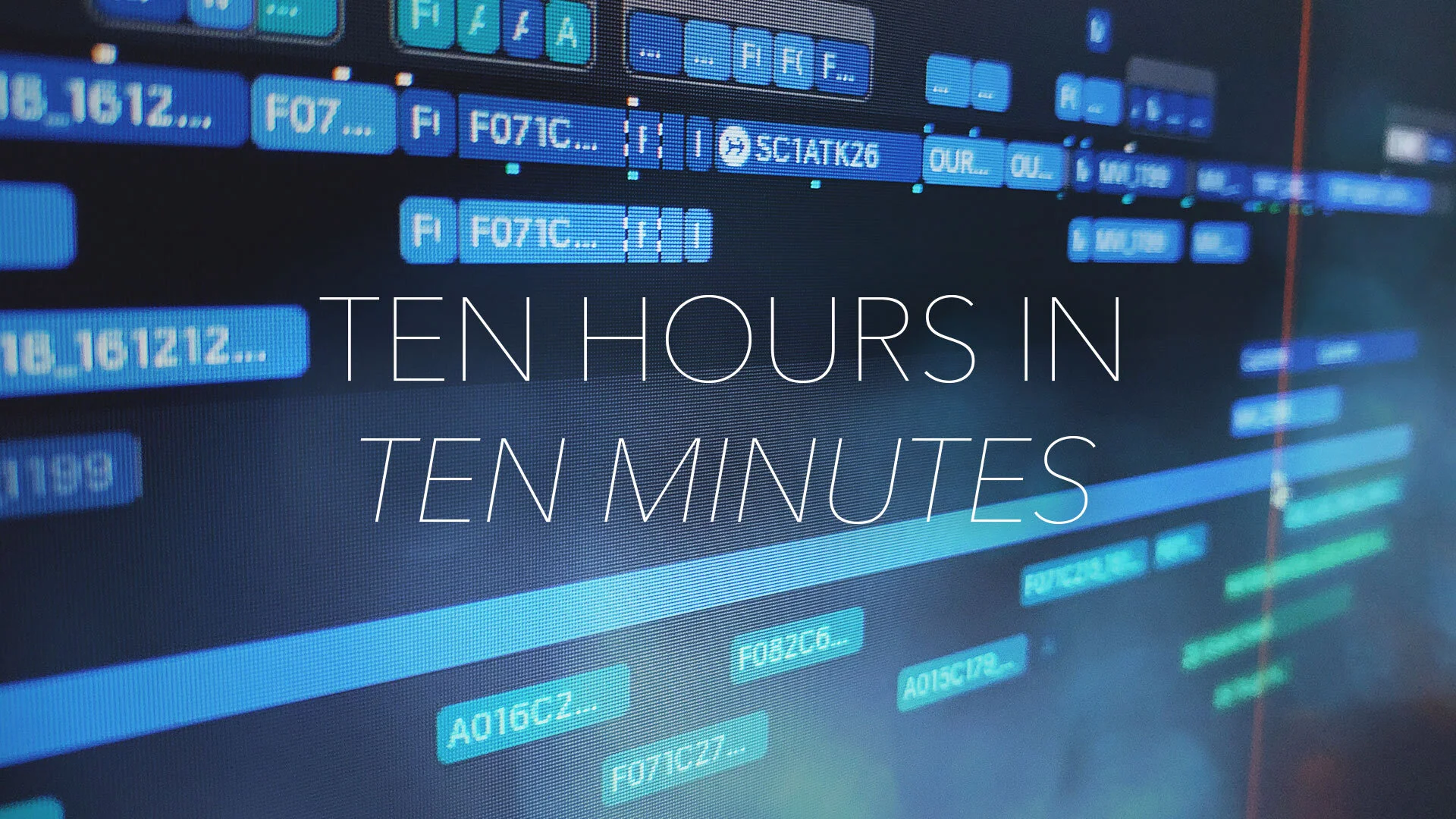Time-lapse: A Ten Hour Edit in Ten Minutes
Each year, we put together a wrap-up trailer for the closing night of TIFF, and each year I am the producer tasked with making it happen. This year I decided to capture the actual edit process and condense it down to a 10 minute time-lapse.
What you won't see here is the several days spent importing footage from the previous day, screening, and then organizing over 70 hours of material. My process is pretty straightforward: I have a list of everything that was captured, and I slowly work my way through the material and pull my selects. Sometimes we get tipped off by the videographers of a great moment, or someone online might mention something great that happened at a screening, and whenever that happens I tend to look at that material first. I also have an assistant editor who is pulling “moments” for the social media team and anytime they find something good I have them flag it for me. This is how things proceed for the first few days.
Eventually, I have to make the call, and actually start editing, and that is what you will see here. What you’ll also see is how a modern NLE like Final Cut Pro makes editing a breeze. What could be a monumental task becomes relatively painless, and we’re able to turn around a locked edit in 10 hours. Of course, what you’ll also see is the creative process at work; auditioning clips, editing music, trying things out only to abandon them when you discover they just aren’t working. With over 70 hours of material from the previous 8 days, you have to be incredibly selective, and sometimes that means even getting rid of stuff you really love.
For those new to Final Cut Pro X, or just curious as to how it compares to NLEs like Premiere, this video will also serve as a great demo for how you go about building an edit “without tracks”. This is perhaps the biggest hurdle for most editors to clear, but once you see it in practice things begin to make a lot more sense; your main “A-Roll” (in our case, sound-ups of people speaking) are put in the primary storyline (the magnetic timeline) and our “B-Roll” (supporting visuals) are “connected” to those clips. These clips can be stacked on top of each other, just like with track-based editing, and if I come across a sequence of B-Roll I’m particularly fond of I can make a “secondary storyline” to group those clips together so they always move together.
Audio works in a similar fashion, with clips being connected to the primary storyline. Audio editing in Final Cut Pro X is one of my favourite things, and the automatic handles are one of my favourite features. You’ll see a lot of audio tweaking in the back-half of the video. The fluidity of the way in which Final Cut Pro X works allows me to work at the pace at which I think, never fighting to make the tool do what I want to do when I want to do it.
And of course, here’s the final product:
I’m not saying that this couldn’t be done in another NLE. In fact, I know that prior to my arrival at TIFF these edits were done with Premiere. However, Final Cut Pro X definitely makes the process much easier than it would with another NLE and I do genuinely think that I am able to screen more footage, find more moments, and turn around a much stronger edit in a shorter amount of time thanks to the power of Final Cut Pro X. If you’re interested in learning more about Final Cut Pro X and how it works, you can always reach out on my contact page.
Finally, I want to give a big shout out to entire festival video team, without whom this literally would be impossible. We have an amazing team of shooters capturing all this incredible footage, an amazing team of DITs who ensure every single card is offloaded and backed up, and my amazing assistant editor, Lee Cochran, who helps support me as best as he can, while overseeing his own responsibilities during the festival. We’re an incredibly well oiled machine, and without these people none of this would be possible.
Ps. If you like this kind of stuff let me know, and I’ll hopefully do more posts like this.


